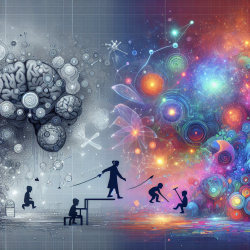Introduction
Blast-Induced Neurotrauma (BINT) is a prevalent yet complex form of traumatic brain injury (TBI) experienced by military personnel. Recent research highlights the unique structural and hormonal alterations associated with BINT, distinguishing it from other forms of occupational stress. This blog delves into the findings of a preliminary investigation that examined the effects of BINT on gray matter volume and hormonal balance, offering insights for practitioners in the field of neurotrauma and rehabilitation.
Key Findings from the Study
The study, titled "Blast-Induced Neurotrauma Results in Spatially Distinct Gray Matter Alteration Alongside Hormonal Alteration: A Preliminary Investigation," involved Canadian Armed Forces personnel and veterans with a history of BINT. The research revealed significant findings:
- Gray Matter Alteration: The study identified widespread and symmetric loci of reduced gray matter (GM) specific to BINT, particularly in regions such as the temporal gyrus, precuneus, and thalamus.
- Hormonal Changes: Participants with BINT exhibited significantly elevated testosterone levels and an increased testosterone/cortisol (T/C) ratio, indicating alterations in the hypothalamic–pituitary–adrenal and –gonadal axes.
Implications for Practitioners
Understanding the distinct effects of BINT is crucial for practitioners working with military personnel and veterans. Here are some ways practitioners can apply these findings:
- Enhanced Diagnosis: By recognizing the specific gray matter alterations and hormonal changes associated with BINT, practitioners can improve diagnostic accuracy and tailor interventions accordingly.
- Targeted Rehabilitation: The identification of affected brain regions can guide targeted rehabilitation strategies, focusing on cognitive and emotional functions linked to the precuneus, thalamus, and temporal gyrus.
- Monitoring Hormonal Levels: Regular assessment of hormonal levels, particularly testosterone and cortisol, can provide insights into the neuroendocrine status of individuals with BINT, aiding in personalized treatment plans.
Encouraging Further Research
While this study provides valuable preliminary insights, further research is needed to explore the long-term effects of BINT and the interplay between structural and hormonal changes. Practitioners are encouraged to contribute to ongoing research efforts and consider collaborative studies to deepen our understanding of BINT.
Conclusion
The findings from this study underscore the unique clinical profile of BINT, characterized by distinct structural and hormonal changes. By integrating these insights into practice, practitioners can enhance their approach to diagnosing and treating military personnel and veterans affected by BINT.
To read the original research paper, please follow this link: Blast-Induced Neurotrauma Results in Spatially Distinct Gray Matter Alteration Alongside Hormonal Alteration: A Preliminary Investigation.










